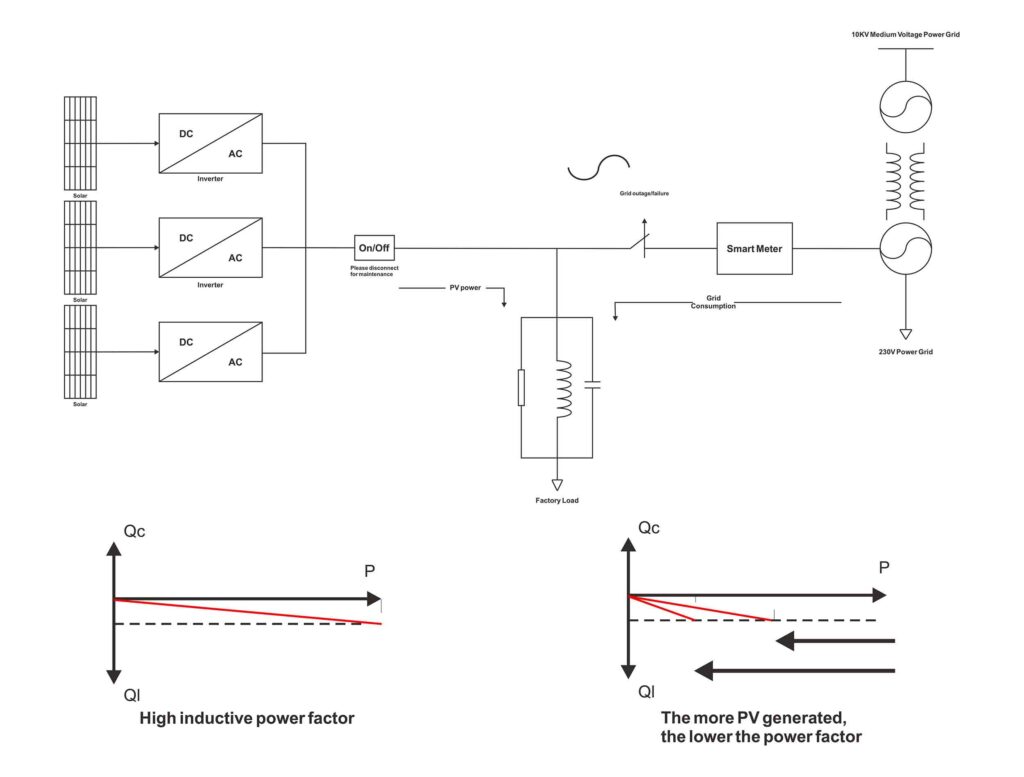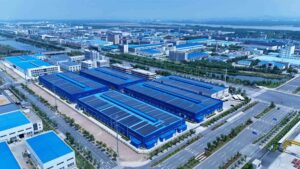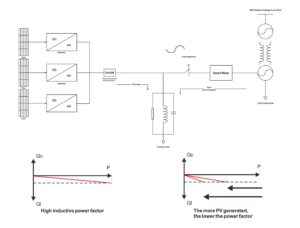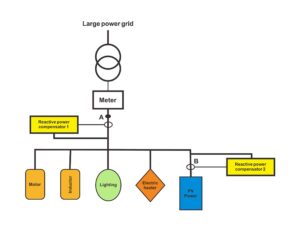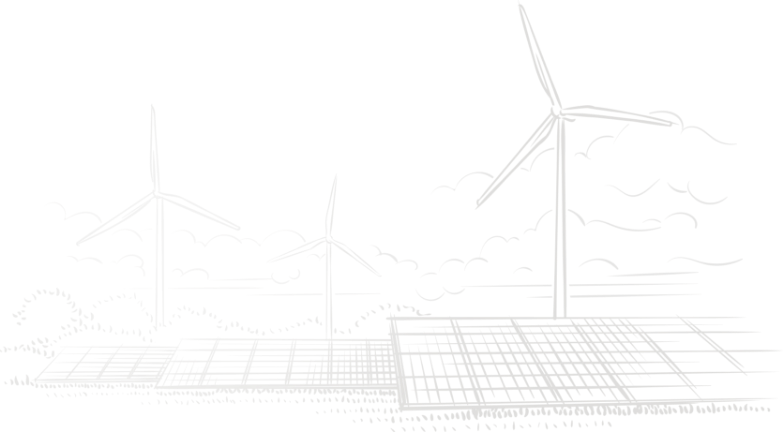In recent years, with the decline in domestic battery cell costs and the gradual improvement of time-of-use electricity price mechanisms in various provinces, photovoltaic and energy storage systems have been changing with each passing day, and the capacity connected to the grid has increased significantly, and the impact on the grid has gradually become apparent. Among them, the problem of reduced power factor is particularly prominent.
Power factor is an important indicator to measure whether an enterprise’s electricity consumption is economical. With the popularization of photovoltaic power generation, some enterprises will also consider installing energy storage systems. So how can we avoid the situation of reduced power factor? The power factor is directly related to the power loss in the power grid, the voltage fluctuation and voltage loss of the power supply line, as well as the safe and economic operation of the power system and the rational use of energy.
- What is power factor?
In industrial enterprises, commonly used motor equipment is inductive load. These equipment consume active power and absorb reactive power from the power grid when working. The power factor cosφ is the proportion of active power in the total power (apparent power), that is, cosφ=P/S (P is active power, S is apparent power, power factor is also referred to as PF), and the relationship between reactive power Q and the first two is S²=P²+Q², so the closer the power factor is to 1, the less reactive power it consumes; conversely, the lower the power factor, the higher the reactive power consumed.
- Why does the power factor of the factory become lower after installing the photovoltaic storage system?
After the distributed photovoltaic system is connected to the factory, the reactive power output by the grid-connected inverter is small. If the capacitive load and inductive load in the factory account for a large proportion, the photovoltaic power generation and energy storage system only provide active power during the discharge period, and the factory load consumes both active power and reactive power. The active power provided by the photovoltaic power generation and energy storage system is consumed first, resulting in a reduction in active power obtained from the power grid, while all reactive power consumption comes only from the power grid. According to the cosφ formula calculation introduced above, the power factor will inevitably decrease for the power grid assessment point, which may cause voltage fluctuations in the power supply system and increased harmonics.
- What is the solution to avoid the power factor drop caused by industrial and commercial photovoltaic and energy storage power stations?
- Reasonable selection of grid connection method
The selection of grid connection method is crucial to avoid the power factor drop. When the photovoltaic power generation and energy storage system is not installed in the factory area, the reactive power compensation system in the grid is automatically adjusted and compensated according to the active power supply power of the grid and the reactive power in the grid. Therefore, the reactive power problem in the grid can be automatically compensated by the reactive power compensation equipment set in the grid, so that the reactive power meets the requirements of the grid.
After the installation of the photovoltaic storage system, the effective grid connection method is to connect the photovoltaic and energy storage systems to the grid before the capacitor cabinet sampling CT, and set the access point of the photovoltaic and energy storage systems to the front end point A of the original reactive compensation equipment (as shown in the figure below), that is, let the photovoltaic storage system and the grid have the same nature and work together for the load, so as to ensure that the reactive compensation device can correctly collect the actual power consumption data of the system load, so as to accurately switch the capacitor and avoid under-compensation or over-compensation. Make full use of the original reactive compensation system to reduce investment. In addition, it is necessary to consider that industrial and commercial energy storage systems must independently implement backflow prevention and avoid accidental discharge when there is surplus photovoltaic power connected to the grid during the energy storage discharge period. The energy storage system’s backflow prevention device CT needs to be installed at point C in the figure below.
- Add a dedicated reactive power compensator for the photovoltaic storage system
Install a dedicated reactive power compensation device for this photovoltaic power generation system. Usually, this reactive power compensation equipment should be installed on the output side of the photovoltaic power station to supplement the photovoltaic power generation system’s lack of large-capacity reactive power compensation capabilities and meet the needs of the power grid. The disadvantage is that the cost is high.
- Passive power factor adjustment through the inverter
The inverter power factor PF is set to a certain value between 0.8 and 1, and a part of the reactive power is compensated by the inverter. Although this method can adjust the power factor, it may cause over-compensation, resulting in waste of photovoltaic power generation. Therefore, it is necessary to gradually adjust the inverter settings until the power factor is normal. However, this method has limitations, because the inverter will output a fixed part of the reactive value, and the inverter may not reach the highest active output, affecting customer benefits.
- Dynamic reactive compensation with smart energy manager
The principle is to use the PF control function of the inverter, install a smart energy manager to collect the power factor value on the bus, continuously calculate the reactive power that needs to be configured for the entire system, and then send the command to each inverter through RS485. The advantage of this method is that it does not require additional capacitor compensation cabinets and is low in cost.
The power factor problem is one of the important problems of many photovoltaic power stations, especially in recent years, industrial and commercial photovoltaic storage systems. In the design stage, it is necessary to fully consider the original transformer, reactive power compensation device, transmission cable, load type and power. For industrial and commercial photovoltaic storage systems connected to the user side, it is necessary to pay attention to the location of the access point, ensure that the reactive power compensation device can function normally, and the power quality meets the requirements of the power grid, so that the photovoltaic power station can operate efficiently and stably, achieve the maximum economic benefits, and meet the power factor requirements of the power company at the same time, avoid fines, and improve energy utilization.

